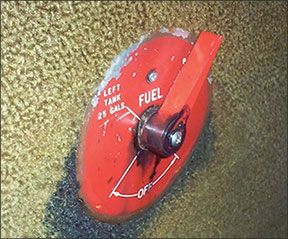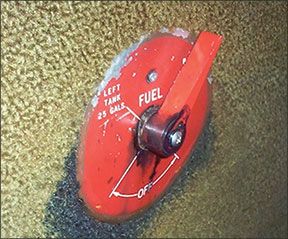This is a story of a trip with two surprises, one with ATC and one with the airplane. Both resulted in momentary confusion, but they taught me two important lessons.

288
After graduating from college, my younger son settled in southern New Jersey, southeast of Philadelphia. To visit him and his growing family, I flew my club’s Piper Cherokee 235 from upstate New York. I’d land at the Camden County (N.J.) Airport and he’d pick me up. This meant transiting Philadelphia’s Class B airspace—always a real thrill. I filed VFR flight plans going down and back. Departing Camden required patience, circling and climbing to the south after takeoff while trying to get my flight plan opened and a clearance to transit the Class B
On this particular trip, my older son was with me, having fun following our flight with the sectionals. As we approached the Philly area, ATC tersely announced I had flown past my destination and terminated flight following. I immediately began circling to figure out what was going on, thinking it would take me forever to get a Class B clearance.
My son suggested ATC must have transposed our destination airport’s identifier, presuming we were landing at the one right beneath us. Fortunately, I was able to quickly sort out things. Lesson # 1: ATC is not always correct; don’t be afraid to question.
On departing, I was circling and climbing, but the frequency was very busy, so I elected to travel north to the east of the Class B airspace and below its 3000-foot layer. I was kept busy staying clear of the towers and outside the airspace. After 20 minutes or so and clearing the airspace, we climbed to cruising altitude. I engaged the autopilot and did a systems check. I’d left the fuel selector on the left tip tank when I sumped the tanks before takeoff. Not thinking, I moved it to the left main position, where it should have been at takeoff.
After ½ hour, I moved it to the right main, then, ½ hour later, back to the left main. When we began our descent to home plate, I went through the checklist, figured all was well and turned off the autopilot. The 235 banked immediately to the right.
“Oh-oh,” I blurted. “DAD??!!” exclaimed my son. I easily leveled the wings and then looked at the fuel gauges, which told the story: a heavy right wing. The landing added to the excitement: With the wind out of the northwest, we landed on Runway 28, holding in plenty of left aileron and rudder to stay aligned with the runway at touchdown.
Lesson # 2: Even though I always fly fuel by the clock, the gauges help to keep track of where the stuff really is. Oh, and hand-fly at least once every half hour. — Art North




